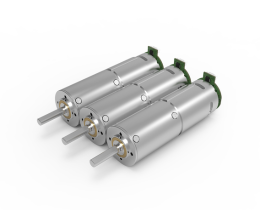Why Your Next DIY Project Needs a Hobby Gearmotor (and How to Pick the Right One)
Let’s talk about something every tinkerer secretly obsesses over: precision. Whether you’re building a custom RC car, automating a miniature greenhouse, or crafting a tiny robot that dances to Taylor Swift, the heart of your project isn’t just creativity—it’s the quiet, reliable hum of a gearmotor. But not all gearmotors are created equal.
.webp)
Take Sarah, for example. She spent weeks designing a solar-powered cat feeder, only to have it jam halfway through its first demo. Why? Her motor couldn’t handle the load. “I thought any small motor would work,” she shrugged. Spoiler: It didn’t. That’s where hobby gearmotors step in—compact, efficient, and built to handle the unexpected.
So, What Makes a Hobby Gearmotor Different?
Glad you asked. Unlike generic motors, these are designed for controlled motion. Think torque that adjusts to resistance, minimal noise (no one wants a DIY project that sounds like a blender), and durability that survives trial-and-error experimentation. One user put it bluntly: “It’s like swapping a bicycle horn for a symphony orchestra.”
But Wait—Aren’t All Gearmotors Basically the Same?
Nope. Let’s break it down:
- Efficiency: A hobby gearmotor doesn’t waste energy. It’s like having a car that only uses gas when you press the pedal.
- Size: Fits in tight spaces but packs a punch. Imagine a motor the size of a matchbox lifting a textbook.
- Adaptability: Works with 3D-printed parts, Arduino setups, or retrofitted vintage toys.
Still skeptical? Here’s a fun experiment: Try running a mini conveyor belt with a standard motor. Now swap in a hobby gearmotor. Notice the smoother start-up? The lack of jerky movements? That’s not magic—it’s engineering.
“But I’m Not a Pro!”
Neither was Mark, who built a wind-powered phone charger for camping. His secret? Choosing a gearmotor with variable speed control. “I didn’t need a degree—just something that worked when the wind picked up,” he said. The lesson: Good gearmotors simplify complexity.
The KPOWER Difference
While we’re avoiding brand shoutouts, let’s just say some manufacturers prioritize specs over real-world usability. Others, like a certain K-named innovator, focus on how their gearmotors perform when your project inevitably goes off-script. Think silent operation, heat resistance, and a lifespan longer than your enthusiasm for half-finished prototypes.
Final Tip: Match the Motor to the Mission
Building a drone? Prioritize lightweight torque. Crafting a kinetic sculpture? Smooth rotation is key. The right gearmotor feels less like a component and more like a collaborator.
So next time your project hits a snag, ask yourself: Is it the design… or the motor? Sometimes, the smallest part makes the biggest difference.


































.webp)

